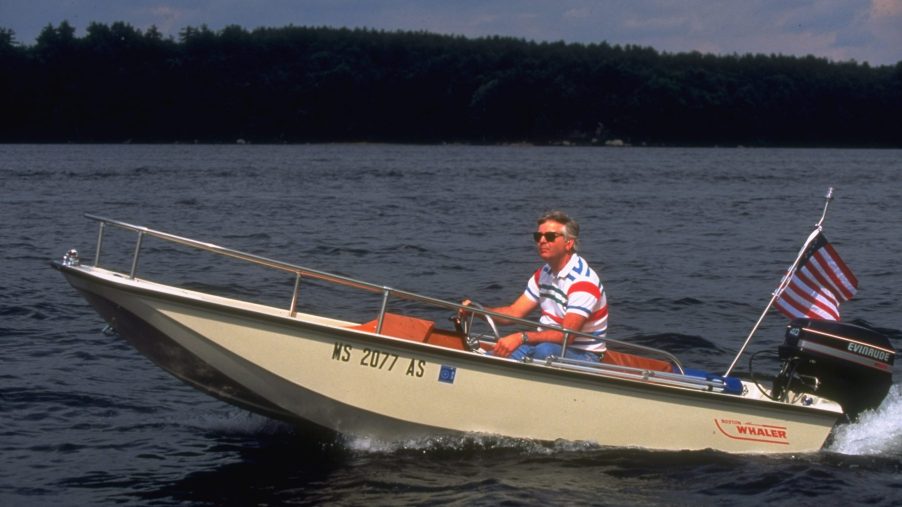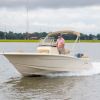
Can a Boat Really Be Made Unsinkable?
Most readers have heard about the British passenger liner RMS Titanic. At the very least, you’ve seen or heard of the 1997 film Titanic. On April 14, 1912, the Titanic struck an iceberg in the North Atlantic Ocean. The vice president and chairman of International Mercantile Marine Company (IMM), Philip Albright Franklin, famously told worried relatives and friends that the boat was unsinkable.
A few hours later, the Titanic sank and more than 1,500 people lost their lives. That was over 100 years ago, nonetheless, and we have the technology now to build a fail-safe boat that won’t sink. Actually, “unsinkable” boats have been around for hundreds of years, though these particular boats aren’t often thought of as “boats” per se.
Separating fact from fiction when it comes to unsinkable boats
Firstly, let’s clear the air before we continue. The shipbuilding company Harland & Wolff never claimed publicly or otherwise that the Titanic was unsinkable. The website historyonthenet.com stated the company claims the ‘unsinkable’ myth originated from misinterpretations of articles published in Shipbuilder Magazine and the Irish News.
Apparently, Franklin fed into the myth as well and perpetuated it by telling people the Titanic was “unsinkable” when in fact it had already sunk to the bottom of the sea.
Either way, the myth surrounding the Titanic being unsinkable has tainted future claims that a boat is unsinkable. But companies like Boston Whaler have been building unsinkable boats for decades using innovative design methods and materials. However, we at MotorBiscuit must advise readers to take any claims of unsinkable watercraft with a few grains of salt—always follow local, state, and federal boating guidelines.
Factors that can make a boat unsinkable
According to Boats.com, six factors come into play when attempting to build an “unsinkable” marine vehicle: 1) The rate at which water enters or “flooding rate.” 2) The rate at which water exits or “pumping rate.” 3) Creating watertight bulkheads or compartments that will remain buoyant even though other bulkheads or compartments flood. 4) Build foam flotations into the core or add them to areas of the boat’s dead space. 5) Place float bags in compartments that can be remotely inflated using CO2. 6) The boat’s margin lines, which are critical points at which it will no longer float.
If you want a real-life example of an unsinkable boat design, you need to look no further than a lifeboat or liferaft. After all, lifeboats are mandatory for ships of certain sizes, with larger lifeboats required depending on the number of passengers or crew expected to be on board. Governments and shipowners have long trusted lifeboats to be sturdy, difficult to capsize, capable of being fully loaded with equipment and/or people, and even inherently capable of self-righting if it capsizes. This is according to international regulations governing the production of lifeboats and life rafts as per rules.dnvgl.com.
Lifeboats and life rafts have been around since the Age of Sail when smaller boats were used to bring people and things to shore. In the early 1880s, a woman named Maria Beasley first invented and patented the first lifeboat, so the idea of an “unsinkable” boat isn’t anything new. Today, hobbyists purchase larger-size lifeboats designed to be dropped from deep-sea oil rigs and are converting them into houseboats. Others are converting them into long voyage vessels and using them to travel the globe.
Why it’s worth it to try and make your boat somewhat unsinkable
Modern vehicles come with a plethora of driver-assist packages and advance safety features, so why should your boat be equally safe. The huge difference between a vehicle and a boat is that oftentimes boaters are on their own until help comes. Depending on how far from land a boat is, help may never come.
It doesn’t matter how expensive a boat is, either. In the past decade or so, several multimillion-dollar yachts have sunk. In June 2014, CNBC reported that “A $10 million, 90-foot yacht was being launched in Washington state when it suddenly capsized.”
According to the report, the yacht was lowered into the water in the water, slowly tilted, and sank. Something similar happened to a couple in Florida who had sold everything they owned to live on a boat.


